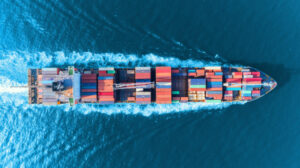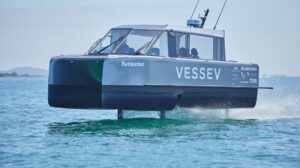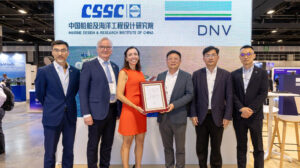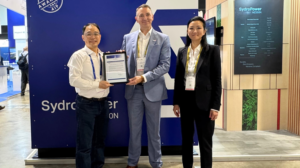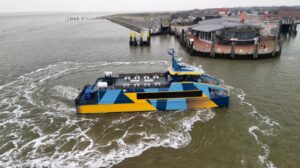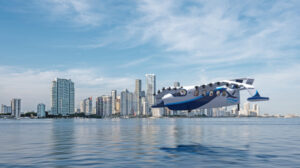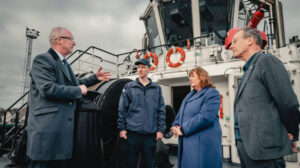Industry news
MPA and Wärtsilä renew maritime decarbonization and digitalization partnership
As part of its renewed partnership with the Maritime and Port Authority of Singapore (MPA), Wärtsilä will introduce the methanol power and control (PAC) simulation model in partnership with the Maritime Energy Training Facility (METF) and Wavelink Maritime Institute. Overall, the renewed partnership will focus on the introduction of next-generation alternative fuels, the optimization of digital port operations and the development of future maritime talent.
The PAC simulation model has been designed to help maritime professionals acquire the knowledge and skills needed to operate methanol-powered vessels safely and efficiently. Wavelink Maritime Institute will reportedly be the first MPA-accredited training partner to use this simulation model.
Vessev reveals plans for expansion into USA
Vessev has announced plans for expansion into the US market. The New Zealand-based electric hydrofoiling ferry company – which picked up the Electric & Hybrid Marine Award for Environmental Achievement of the Year, Vessel Design in 2024 – has also announced the appointment of Josh Trout as director of North America. In this role, Trout will lead the establishment of Vessev’s US operations, oversee the production of Vessev craft in the USA, and develop and streamline the company’s business development.
“As an American, nothing would make me prouder than bringing the New Zealand innovation to the States,” said Vessev CEO Eric Laakmann.
Continue reading Vessev reveals plans for expansion into USA at Electric Hybrid Marine Technology.
DNV awards AiP for new ammonia-ready bulk carrier
The Marine Design and Research Institute of China (MARIC) has received approval in principle (AiP) from DNV for a new wide-beam ammonia-ready Kamsarmax bulk carrier. The vessel has a shallow draft for flexible port calls, and is WAPS (wind-assisted propulsion system) ready.
With a length of 229m and an increased beam of 38m, the design has been optimized for more cargo volume at the same draft. The hull structure is reinforced, and space is reserved for an easier retrofit of the ammonia tanks and system. The vessel can cover more than 15,000 nautical miles at design speed – fueled on ammonia.
Sydrogen receives Basic Design Assessment statement for advanced hydrogen fuel cell
Bureau Veritas Marine & Offshore has awarded a Basic Design Assessment (BDA) statement to hydrogen fuel cell specialist Sydrogen for the SydroPower series model MZ250N maritime fuel cell. This marks an important step toward commercializing Sydrogen’s fuel cell solutions for the maritime industry.
The SydroPower series leverages proven automotive hydrogen fuel cell technology from Sydrogen’s partner Shanghai Hydrogen Propulsion Technology (SHPT). The system is designed to provide reliable power for a wide range of maritime applications, from commercial vessels to offshore platforms.
The BDA statement, which represents a more advanced stage of validation compared to an approval in principle, demonstrates compliance with BV safety, performance and reliability standards.
Electric & Hybrid Marine Awards 2025 – Nominations open
Nominations for the Electric & Hybrid Marine Awards 2025 are now open, and the winners will be revealed at Electric & Hybrid Marine Expo Europe. You can read all about the 2024 winners here.
The awards, which had its categories updated in 2023, recognize and reward the latest achievements and developments across the marine sustainability sector. Nominations can be put forward by anyone working in the industry. Please get your nominations for the 2025 awards to us by April 25. The shortlisted entrants will be announced in the coming months.
The categories are:
Environmental achievement of the year – propulsion system design
This category will celebrate the latest and greatest breakthroughs in electric and hybrid propulsion technologies and system design.
Reederei Norden-Frisia names new electric catamaran
Reederei Norden-Frisia has named its new electric catamaran (E-Kat) the Frisia E-I. The E and the I (1) in the name represent the ship’s status as Germany’s first electric ocean-going ship.
From April 4, 2025, the Frisia E-I will transport up to 150 guests, eight times a day, from its Norddeich home port to the North Sea Island of Norderney and back. The journey time will be 30 minutes. Once back in Norddeich, the battery will be recharged in approximately 28 minutes and the Frisia E-I can then start its next trip to the island. With the new ship, these crossings will be completely CO2-neutral for the first time.
Regent Craft submits electric seaglider design to US Coast Guard
Regent Craft, a Rhode Island-based developer and manufacturer of all-electric seagliders, has submitted its design basis agreement (DBA) for the 12-passenger Viceroy seaglider to the US Coast Guard. The seagliders are high-speed, all-electric vessels that operate exclusively over the water to connect coastal destinations.
Electric seaglider design basis agreement
The DBA establishes what the Viceroy seaglider design must do to show an equivalent level of safety to other similarly sized certified vessels. It consists of a concept synopsis, regulatory analysis and risk/hazard analysis. The submission follows months of collaboration between Regent and the US Coast Guard to mature the contents of the DBA and ensure the Viceroy design meets or exceeds required regulatory safety standards.
Port of Leith unveils green hydrogen shore power demonstrator
Innovate UK and the UK Department for Transport, together with project partners Forth Ports, Targe Towing, Logan Energy, PlusZero and Waterwhelm, have showcased what they state is the world’s first Green Hydrogen Shore Power Demonstrator that uses clean, green hydrogen energy to reduce carbon emissions from vessels when berthed in port.
This project is part of the Clean Maritime Demonstration Competition Round 4 (CMDC4), funded by the UK Department for Transport (DfT) and delivered by Innovate UK. CMDC4 is part of the Department’s UK Shipping Office for Reducing Emissions (UK SHORE) program, a £236m (US$305m) initiative focused on developing the technology necessary to decarbonize the UK domestic maritime sector.
